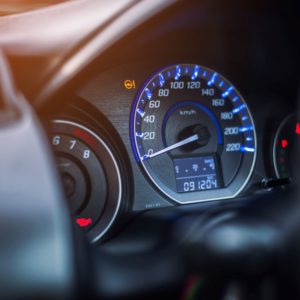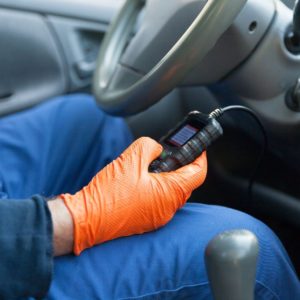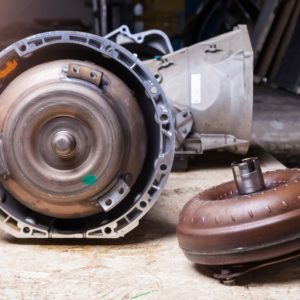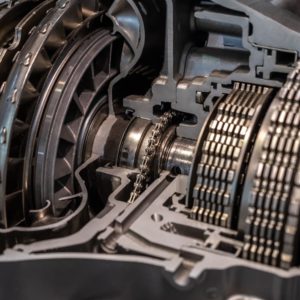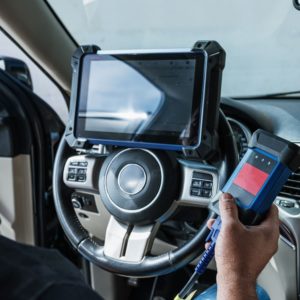A torque converter has an impeller, turbine, and stator. These components all work together to multiply engine torque. The impeller rotates with the engine and sends transmission fluid to the turbine, which turns the transmission input shaft. The stator redirects the fluid flow right back to the impeller to increase efficiency.
All modern torque converters have a lockup clutch positioned between the turbine and front cover. If the transmission control module (TCM) detects a malfunction with the torque converter clutch solenoid or its circuit, the vehicle’s computer will register a P2761 code on a scan tool.

What Does the P2761 Code Mean?
Diagnostic trouble code (DTC) P2761 stands for “Torque Converter Clutch Pressure Control Solenoid Control.”
The torque converter prevents engine stalling and multiplies torque to boost power. This device is firmly attached to a flexplate, which is a thin metal disc that dampens vibrations and lessens engine pulsations. An external ring gear is either welded to the torque converter cover’s exterior or secured to the flexplate’s outer rim.
As was mentioned, all modern torque converters have a lockup clutch positioned between the turbine and front cover. The torque converter clutch (TCC) eliminates the energy-wasting slippage within the torque converter by creating a mechanical connection between the engine and the transmission.
Hydraulic fluid is used to apply the torque converter clutch. A computer—often referred to as the transmission control module (TCM)—looks at data from various sensors to determine when to apply the clutch. Once the TCM has deemed conditions are correct, it operates a solenoid valve to allow fluid flow to activate the converter clutch.
The TCC solenoid receives a signal voltage from the TCM to send pressurized fluid to the circuit. If the TCM detects a problem with the TCC solenoid or its circuit, the TCM will register a P2761 code.

Note: The definition of code P2761 might be different depending on the vehicle manufacturer. Consult the appropriate repair manual or repair database for the exact code definition.
What are the Common Causes of the P2761 Code?
- Faulty Torque converter clutch solenoid
- Wiring issue
- Internal torque converter or transmission failure
- Issue with the TCM
What are the Common Symptoms of the P2761 Code?
- Illuminated check engine light
- Torque converter clutch doesn’t operate properly
- Increased fuel consumption
- Possible transmission shift issues
How to Diagnose the P2761 Code
Not all vehicles are the same. Some makes and models have specific diagnostic procedures for OBD-II code P2761. For example, it’s possible that the diagnostic process for a Chevy’s P2761 code will differ from that for a Ford. You must review your vehicle’s repair manual to figure out the appropriate solution to your DTC‘s underlying problems. Here’s an instructional video that can help you get started on your diagnosis.
However, if you don’t have the necessary auto repair skills and knowledge, we recommend taking your vehicle to a certified mechanic to avoid costly DIY mistakes.
How to Fix the P2761 Code
There might be one or more problems associated with a P2761 code. If you don’t have the auto repair knowledge to correctly identify these issues, you’ll have a hard time in the garage. We suggest reading Chilton repair manuals to learn about your vehicle’s parts and get an ALLDATA subscription to learn about its common problems.
Any information provided on this Website is for informational purposes only and is not intended to replace consultation with a professional mechanic. The accuracy and timeliness of the information may change from the time of publication.


